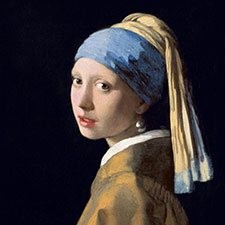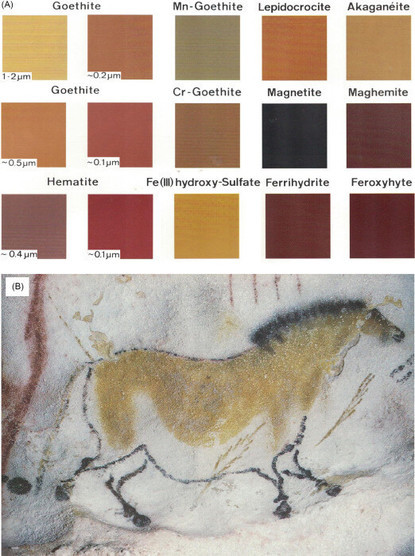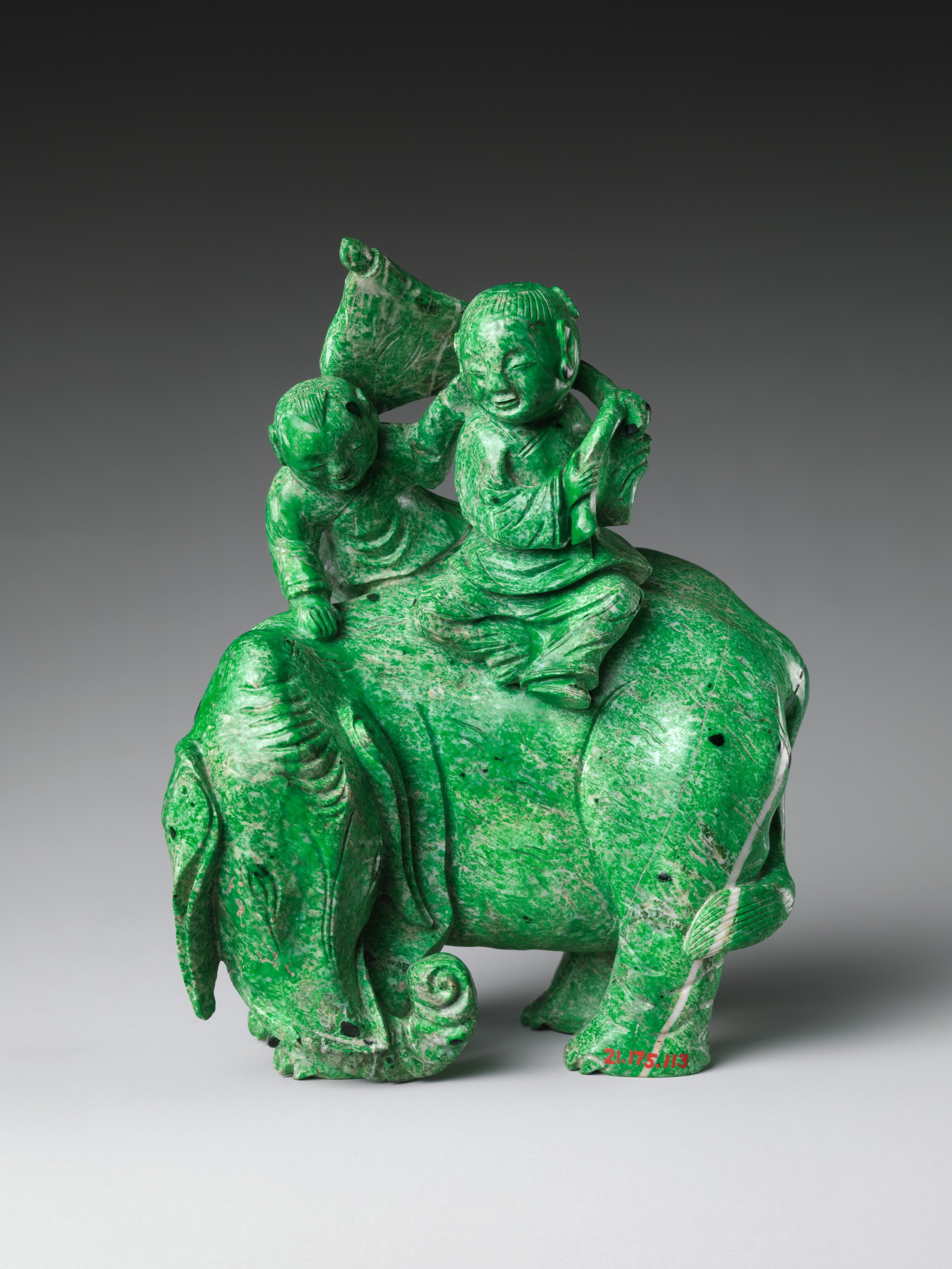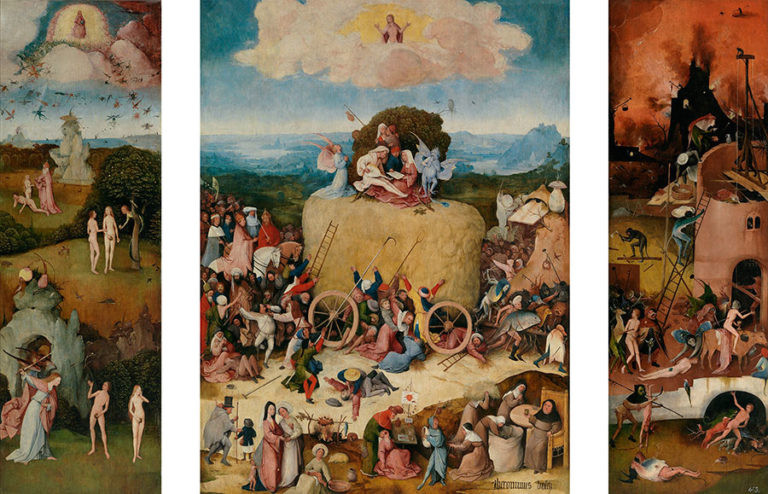Johannes Vermeer, Girl With a Pearl Earring
ca 1665
Medium: Oil
Support: Canvas
Size: 44.5 cm x 39 cm
Art period: Baroque
Mauritshuis, The Hague
Painting
This is the famous painting of the young Dutch woman in gold jacket with white collar, gold and blue turban with large pearl earrings looking over her shoulder at the viewer, against a near-black background.
“Vermeer, Girl with a Pearl Earring is an exceptional example of Vermeer’s genius, it is a portrait of an unknown girl or maybe a generalized female head (called a ‘tronie’ in Netherlands). The pigment analysis revealed a limited palette consisting of red, brown and yellow ochre, natural ultramarine, indigo, lead white, and the rare yellow pigment weld (luteoline).”
Red ochre is hematite.
Via ColourLex








